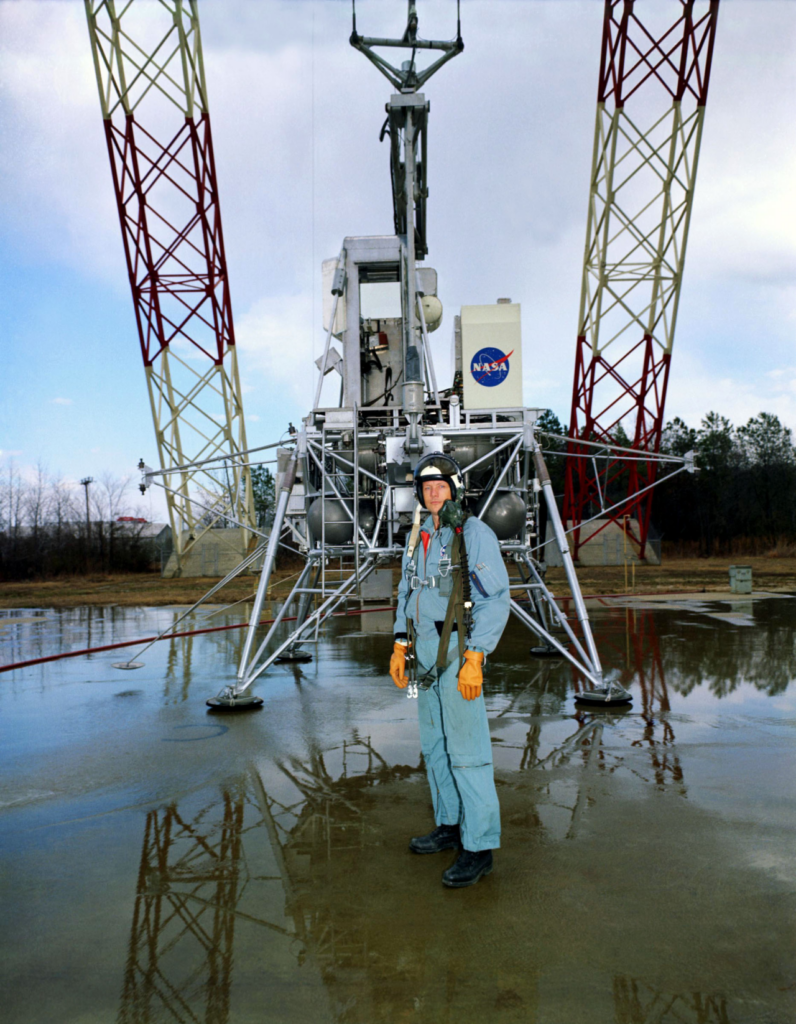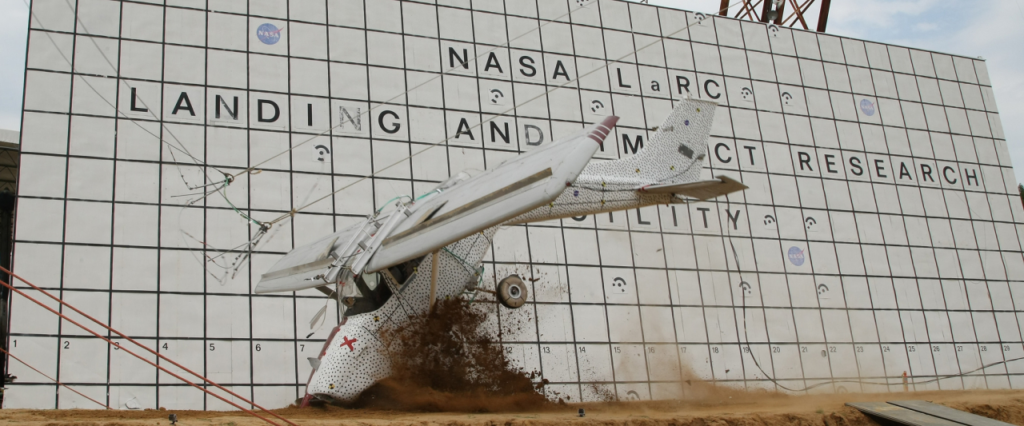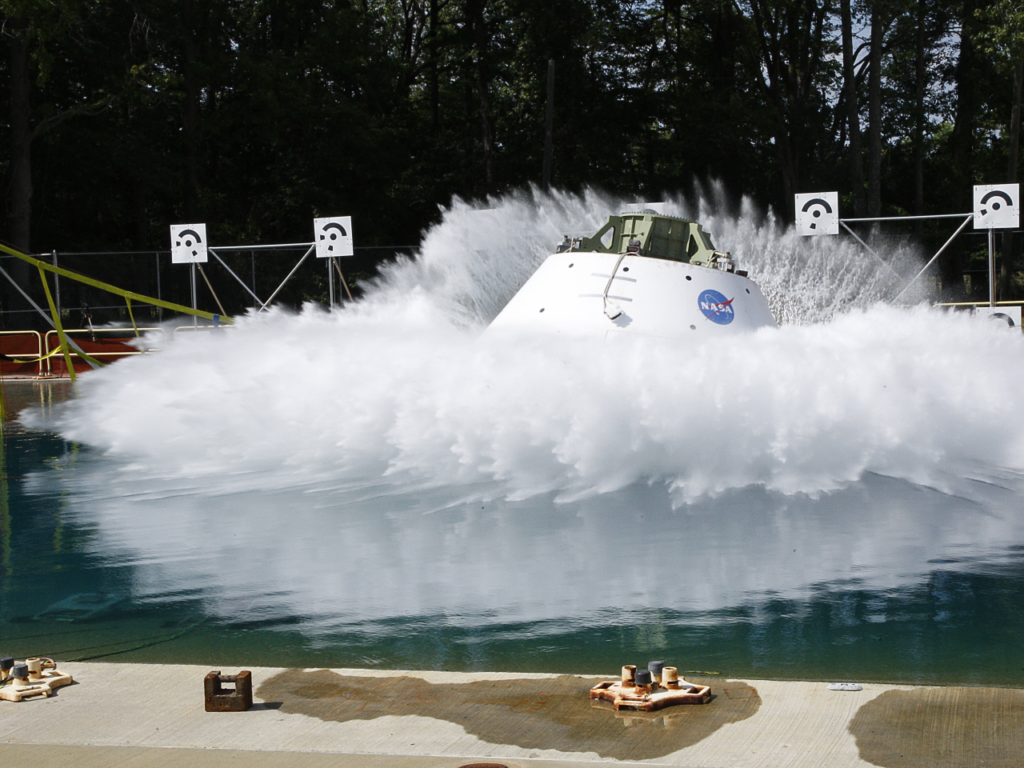A national historical landmark, the NASA Langley Research Center Landing and Impact Research Facility (LandIR) vehicle structural testing complex, better known as the “gantry”, continues to serve NASA and the nation as a unique venue for full-scale crash and impact tests on both land and water.
Originally known as the Lunar Landing Research Facility (LLRF), it was completed in 1965. Every astronaut that landed on the moon including Neil Armstrong (below) trained at this facility utilizing an offloading system that supported 5/6 of the gravity of a lunar lander simulator while they worked through problems at night above a simulated moonscape.

Since the Apollo program, the 240-foot high, 400-foot long, 265-foot wide, A-frame steel structure has been modified to take on new roles. It now serves as a unique facility for carrying out full-scale aircraft and spacecraft tests. Many of those tests have provided crucial research test data on the crashworthiness of military, commercial, and General Aviation (GA) aircraft as well as rotorcraft. In 2005, a donated NASCR race car was used at the gantry to test energy absorbing walls.

In 2011, the facility was augmented with the construction of the 20 ft deep hydro impact basin, which allows the facility to simulate aircraft and spacecraft water landings. The complex has been used recently for space exploration research testing including water landing tests of NASA’s Orion Crew Exploration Vehicle and land impact testing of the capsule that will return Mars soil samples to Earth in coming years.

The gantry facility’s staff can carry out unique end-to-end full-scale testing including planning, instrumentation, design and fabrication of ground support equipment, high-fidelity finite element modeling to predict test response, and post-test model correlation. LandIR is also equipped with a number of indoor and outdoor drop towers for impact testing and a suite of anthropomorphic test devices for simulating occupant responses during impact.
Gantry Key Features:
- Max drop heigh: approximately 200 ft
- Max bridge crane load: 65,000 lb
- Hydro-impact basin dimensions: 115 ft long, 90 ft wide
- Hydro-impact basin depth: 20 ft
Other Facility Equipment:
- 72-ft outdoor drop tower
- 50-ft three-rail outdoor drop tower
- 30-ft four-rail indoor drop tower
- 15-ft two-rail indoor drop tower
- Anthropomorphic Test Devices (crash test dummies)
- Materials testing machines
- High-speed cameras
- Ruggedized data acquisition systems
- Three-dimensional scanners
- Other instrumentation including accelerometers, load cells, string pots, etc.

For more information about the gantry or to inquire about testing services, please contact Matt Chamberlain (matthew.k.chamberlain@nasa.gov)

